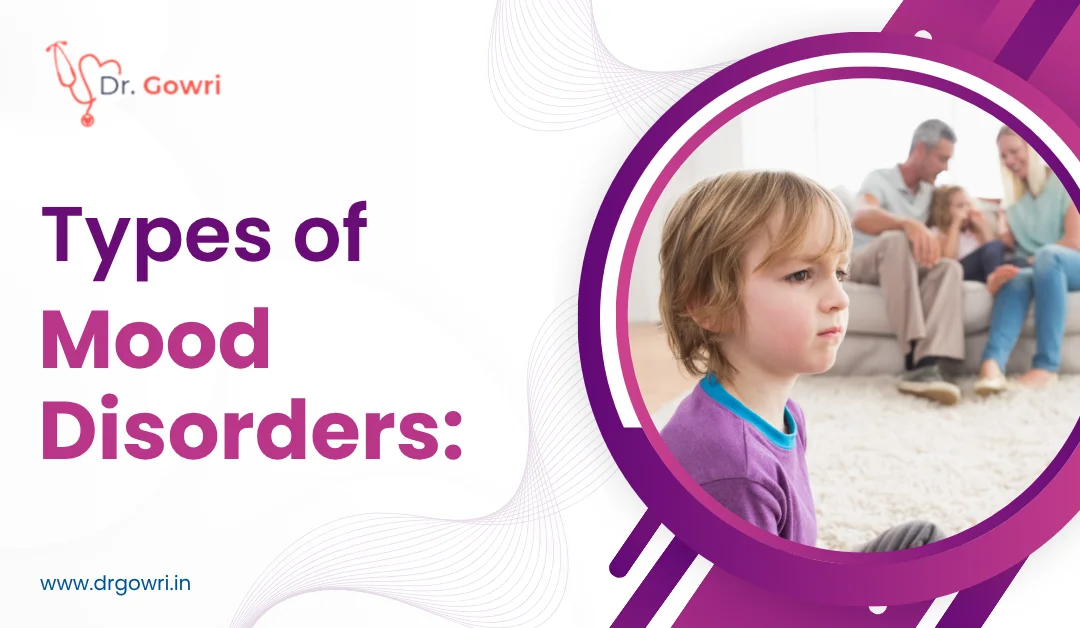Mood disorders are a category of mental health conditions that primarily affect an individual’s emotional state. These disorders can lead to persistent feelings of sadness, extreme mood swings, or prolonged emotional disturbances that interfere with daily functioning. Understanding mood disorders, their types, causes, symptoms, and treatment options is crucial for effective management and support.
Types of Mood Disorders:
i) Major Depressive Disorder (MDD):
Characterized by persistent feelings of sadness, loss of interest in activities, fatigue, and changes in appetite or sleep patterns. MDD is defined by the presence of five or more depressive symptoms during two weeks, with at least one symptom being either depressed mood or loss of interest or pleasure. These symptoms must cause clinically significant distress or impairment in social, occupational, or other important areas of functioning.
ii) Bipolar Disorder:
Involves extreme mood swings between depressive episodes and manic or hypomanic episodes of elevated mood, increased energy, and impulsive behavior. These mood swings can significantly disrupt an individual’s life, affecting their relationships, career, and overall well-being.
iii) Dysthymia (Persistent Depressive Disorder):
A chronic form of depression with milder but long-lasting symptoms. While the severity of symptoms in dysthymia may be less intense than in MDD, their persistent nature can significantly impact functioning and overall well-being.
iv) Seasonal Affective Disorder (SAD):
Depression that occurs at a specific time of year, usually in winter, due to reduced sunlight exposure.
v) Premenstrual Dysphoric Disorder (PMDD):
A severe form of premenstrual syndrome (PMS) that affects mood, causing depression, and irritability before menstruation, and resolves within a few days after the onset of menstruation. The severity of these symptoms must cause clinically significant distress or impairment in functioning.
Common Symptoms
Symptoms of mood disorders vary based on the specific condition but may include:
- Persistent sadness or emptiness
- Loss of interest in activities once enjoyed
- Changes in appetite and sleep patterns
- Fatigue or low energy levels
- Difficulty concentrating or making decisions
- Feelings of guilt, hopelessness, or worthlessness
- Suicidal thoughts or behaviours (in severe cases)
- Episodes of mania (in bipolar disorder) marked by excessive energy, racing thoughts, or impulsive behaviour
Causes of Mood Disorders
- Biological Factors: Imbalances in brain chemicals (neurotransmitters) like serotonin and dopamine.
- Genetics: A family history of mood disorders increases the likelihood of developing one.
- Environmental Factors: Stressful life events, trauma, or major life changes.
- Psychological Factors: Negative thinking patterns, low self-esteem, or unresolved emotional conflicts.
- Medical Conditions: Chronic illnesses, hormonal imbalances, or substance abuse can trigger or worsen mood disorders.
Diagnosis and Treatment
Mood disorders are diagnosed through clinical evaluations, psychological assessments, and, in some cases, medical tests to rule out underlying conditions. Treatment options include:
- Psychotherapy: Cognitive-behavioural therapy (CBT), interpersonal therapy, and other therapeutic approaches help individuals manage symptoms and develop coping strategies.
- Medications: Antidepressants, mood stabilizers, and antipsychotic medications can help balance brain chemistry.
- Lifestyle Changes: Regular exercise, a balanced diet, adequate sleep, and stress management techniques can support emotional well-being.
- Support Systems: Engaging in support groups, family therapy, and social connections can provide emotional support and encouragement.
- Alternative Therapies: Mindfulness, meditation, and light therapy (for SAD) may complement traditional treatments.
While mood disorders can be challenging to manage; early intervention, medical support, and lifestyle adjustments can significantly improve an individual’s quality of life.
About the Author

Dr. Gowri Ravi Chinthalapalli is a Developmental and Family Physician with over 16 years of experience in child development and family medicine. She has treated more than 50,000 patients worldwide. After completing her MBBS from Rajiv Gandhi University of Health Sciences, she pursued MRCGP from the UK and gained wide experience in primary care and emergency medicine. She also holds a Fellowship in Child Development from the Centre for Child Development and Disabilities, Bengaluru. Dr. Gowri currently practices at Aster CMI Hospital and Canara Diagnostic Centre, Bengaluru. She is passionate about guiding families, supporting children with developmental needs, and providing holistic care.

